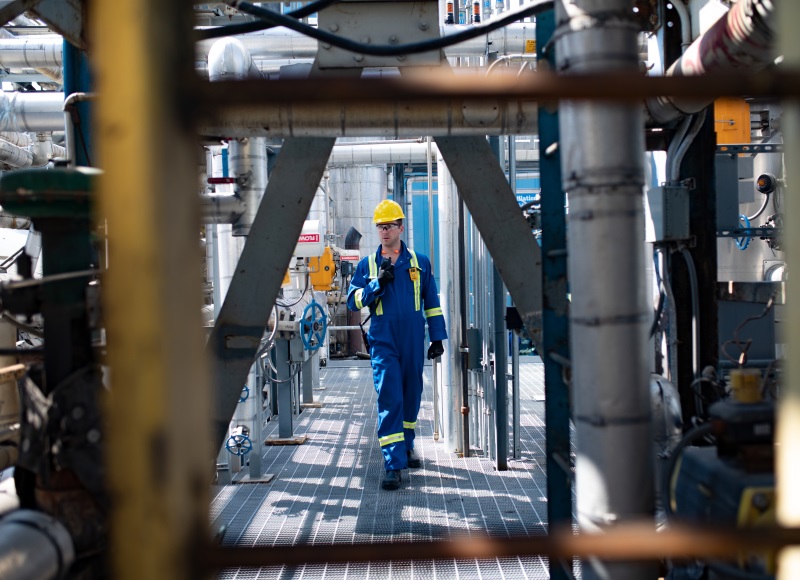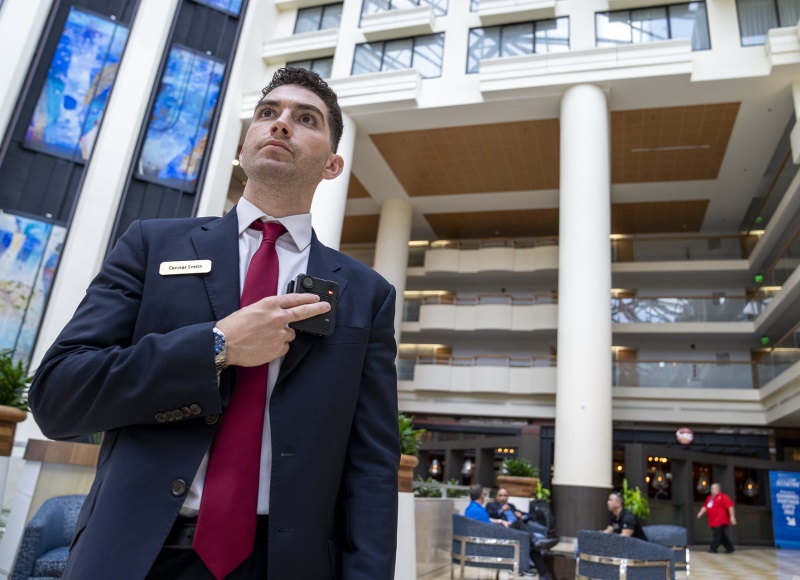

What is the purpose of two way radio?
Two-way radios are used to communicate between two or more people over short or long distances. They can be used in a variety of business applications including security, education, public safety, healthcare, recreation and more. Two–way radios are also known as walkie–talkies, handheld radios, transceivers, and portable radios.
How does a two way radio work?
Two way radios are communication devices that use radio waves to send and receive signals. Handportable Radios work by transmitting an audio signal from a transmitter to a receiver. The transmitter takes the user‘s voice or other sound and converts it into a radio frequency (RF) signal. This signal is then transmitted through the air, where it is picked up by a receiver. The receiver decodes the RF signal back into an audio signal, which can be heard by the user.
Are two way radios and walkie talkies the same?
Operationally, yes, however a walkie talkie often refers to a lower powered, non licensed PMR446 radio. A walkie talkie allows users to communicate wirelessly over short distances and ideal for consumer use, or small business environments. An example of PMR446 radios are: Motorola Solutions – Motorola XT420, and Motorola T82 extreme.
Do all two way radios work together?
While all two-way radios use the same type of radio frequency technology, they do not necessarily work together. Different types of radios utilise different frequencies, for example PMR446, UHF or VHF, so it is important to make sure that the radios you are trying to use together are compatible.
What factors impact radio coverage?
The communication range quoted is calculated based on an unobstructed line of sight test under optimum conditions. Actual range will vary depending on terrain and conditions, and is often less than the maximum possible. Your actual range will be limited by several factors including, but not limited to: terrain, weather conditions, electromagnetic interference and obstructions. If you are unsure if your chosen device will reach your required coverage footprint ask Radiocoms for a demo to trial on site.
Do two way radios require a license?
In some cases, yes, two–way radios may require a license to operate. This is typically dependent on the radio‘s power output and frequencies used. It is important to check with your local regulations prior to purchasing or operating any two–way radio.
How do I get a two way radio licence?
In the UK two–way radios that are used for business purposes require a license from OFCOM. To get a radio license, you will need to apply via the OFCOM’s Licensing System. Here is a link to their guide on how to apply: https://www.ofcom.org.uk/manage-your-licence/radiocommunication-licences
Radiocoms can support you with your OFCOM radio licence application, simply contact us on 0333 939 0022.
Are two-way radios encrypted?
Two–way radios can be encrypted, but it is not a standard feature. Encryption requires additional hardware and software, either of which must be purchased separately or as part of an integrated system.
Can two way radios be tracked?
In some cases, yes. Two–way radios can be tracked if they are equipped with a GPS tracking feature or a specialised tracking device. Such devices allow the user to locate the radio in real time and/or view its past movements.
What is two way radio etiquette?
Two way radio etiquette includes using proper language, avoiding unnecessary chatter, and speaking with a clear voice. It also involves abiding by the rules of the channel you are using, listening before transmitting, keeping transmissions as brief as possible, addressing other users correctly, allowing emergency traffic to come first, and releasing the button after each transmission.
Which two way radio is best?
The best two way radio will depend on your needs and budget. Some of the most popular manufacturers include Motorola Solutions, Hytera Europe Communications, Entel, Icom, and TAIT.
How do you operate a two way radio?
1. Find the power button on your two way radio and press it to turn it on.
2. Select the channel you want to use. Many radios have multiple channels that can be used for different purposes. Make sure both parties are using the same channel so they can communicate with each other.
3. Press the push–to–talk (PTT) button to speak into the radio and then release it to listen.
4. Speak clearly and concisely, using proper radio etiquette. Keep your transmissions short and only say what is necessary.
5. When finished speaking, release the PTT button and wait for a response from the other person.
Recommended two way radios
Still got questions?
We are here to help. Our team of industry experts are ready to support you.
Arrange A Quotation | Call 033 3939 0022 | Chat Live
Read more
Let’s start a conversation
If you would like further information, or to discuss your requirements onsite:
Book An Appointment | Arrange A Quotation | Call 033 3939 0022












